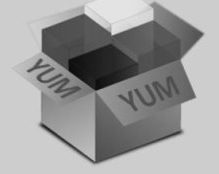YUM – Yellowdog Updater Modified
YUM is an open-source command-line as well as graphical-based package management tool for RPM (RedHat Package Manager) based Linux systems.
It allows users and system administrators to easily install, update, remove or search software packages on a system
- Install a Package
To install a package, just run the below command it will automatically find and install all required dependencies for package.
# yum install
If you want to install packages automatically without asking for any confirmation, use the option -y as shown below example.
# yum -y install
2. Remove a Package
To remove a package completely with all the dependencies, just run the below command.
# yum remove
To disable the confirmation prompt just add option -y as shown below.
# yum -y remove
- Updating a Package
If you used outdated version of package like mysql, php, etc.. you need to update the package. At that time, use this below command to update the package.
# yum update
4. List a Package
Use the list function to search for the specific package with a name like openssh, cron, curl, etc.. To search for a package, use the below command.
# yum list
- Get Information about a Package
If would you like to know the information about a package before installing it. To get information on a package just use the below command.
# yum info
List all Installed Packages
If you want to know the installed packages on your system use the below command,
# yum list installed
It will display all the installed packages.
- Check for Available Updates
To find how many installed packages on your system have updates available, check to use the following command.
# yum check-update
- Update System
To keep your system up-to-date with all security and binary package updates, run the following command. It will install all the latest patches and security updates to your system
# yum update
- Clean Yum Cache
By default yum keeps all the repository enabled package data in /var/cache/yum/ with each sub-directory, to clean all cached files from the enabled repository, you need to run the following command regularly to clean up all the cache.
# yum clean all
- View History
To view all the past transactions of the yum command, just use the following command.
# yum history
